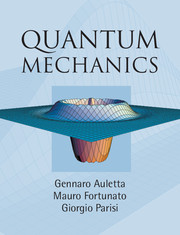Book contents
- Frontmatter
- Contents
- List of figures
- List of tables
- List of definitions, principles, etc.
- List of boxes
- List of symbols
- List of abbreviations
- Introduction
- Part I Basic features of quantum mechanics
- Part II More advanced topics
- Part III Matter and light
- Part IV Quantum information: state and correlations
- Bibliography
- Author index
- Subject index
Introduction
Published online by Cambridge University Press: 05 June 2012
- Frontmatter
- Contents
- List of figures
- List of tables
- List of definitions, principles, etc.
- List of boxes
- List of symbols
- List of abbreviations
- Introduction
- Part I Basic features of quantum mechanics
- Part II More advanced topics
- Part III Matter and light
- Part IV Quantum information: state and correlations
- Bibliography
- Author index
- Subject index
Summary
Why yet another book on quantum mechanics? Quantum mechanics was born in the first quarter of the twentieth century and has received an enormous number of theoretical and experimental confirmations over the years. It is considered to be the fundamental physical paradigm, and has a wide range of applications, from cosmology to chemistry, and from biology to information sciences. It is one of the greatest intellectual achievements of the past century. As an effect of its invention, the very concept of physical reality was changed, and “observation,” “measurement,” “prediction,” and “state of the system” acquired a new and deeper meaning.
Probability was not unknown in physics: it was introduced by Boltzmann in order to control the behavior of a system with a very large number of particles. It was the missing concept in order to understand the thermodynamics of macroscopic bodies, but the structure of the physical laws remained still deterministic. The introduction of probability was needed as a consequence of our lack of knowledge of the initial conditions of the system and of our inability to solve an enormous number of coupled non-linear differential equations.
In quantum mechanics, the tune is different: if we have 106 radioactive atoms no intrinsic unknown variables decide which of them will decay first. What we observe experimentally seems to be an irreducible random process. The original explanation of this phenomenon in quantum mechanics was rather unexpected.
- Type
- Chapter
- Information
- Quantum Mechanics , pp. 1 - 4Publisher: Cambridge University PressPrint publication year: 2009



